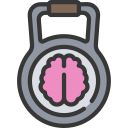Breathe to Compete: Breathwork for Enhanced Athletic Focus
Chosen theme: Breathwork for Enhanced Athletic Focus. Welcome to a space where your lungs become your secret training partner. Today we’ll turn breath into a reliable focus tool, helping you sharpen attention, steady nerves, and convert preparation into performance. Read on, try the drills, and share your experiences to help this community grow.

CO2 Tolerance and Attention Locking
When you gently train your tolerance to carbon dioxide, your brain learns to stay steady as internal signals intensify. That steadiness helps attention remain locked when the game speeds up. Athletes describe it as clearer edges around action. Try short breath holds between easy efforts and note your mental sharpness.

Nasal Breathing, Nitric Oxide, and Sharper Decisions
Nasal breathing filters air and releases small amounts of nitric oxide, improving airflow distribution and supporting better oxygen use. That steadier physiology can mean cleaner decision-making under pressure. Think of it like de-fogging a windshield mid-race. Train nose-only on warm-ups and tell us how your on-field clarity changes.

The Vagus Nerve: Calm Intensity for Clutch Moments
Long, slow exhales stimulate the vagus nerve, nudging your system toward calm alertness rather than jittery arousal. This balance—calm intensity—lets you execute under stress. Before key plays, take one deliberate inhale and extend your exhale. Track your composure, and share your pre-play ritual with our readers.
Pre-Competition Breathwork Routines That Prime Focus
Spend two minutes nose-only, light breaths while scanning your body for tension. Add ninety seconds of box breathing—inhale four, hold four, exhale four, hold four. Finish with ninety seconds of longer exhales—inhale four, exhale eight. Let distractions drift. Repeat before practice, then before competition, and report your pregame clarity.
Pre-Competition Breathwork Routines That Prime Focus
Pair a simple cadence with words: in for four, think ‘steady’; hold for two, think ‘ready’; out for six, think ‘execute.’ This quiet mantra ties breath to intention and reduces pre-start noise. Craft your version, practice daily for a week, and post your mantra so teammates can experiment too.


Downshift with Extended Exhale Protocols
Sit or lie down. Inhale gently through the nose for four, then exhale for eight to ten. Repeat for five minutes. The extended exhale encourages parasympathetic activity, smoothing the nervous system. Use after hard intervals or high-pressure games, and note how quickly your mind regains quiet clarity.
Rapid De-Stress with the Cyclic Sigh
When stress spikes, try a two-part nasal inhale followed by a slow, complete exhale. Two to five rounds often soften the edge fast. Many athletes use this before media interviews or team huddles. Give it a shot today, track the difference, and share your situation where it worked best.
Sleep Priming with Gentle Cadence
Before bed, dim lights and practice nasal breathing at a calm cadence: inhale four, exhale six or eight. Keep shoulders relaxed and jaw soft. This steadiness teaches your body safety cues, deepening sleep. Test it for three nights, journal your focus next morning, and tell the community the outcome.
Real Stories: Focus Wins Powered by Breath
The Miler Who Chased Exhales, Not Splits
Halfway through a championship mile, panic crept in. She shifted to a steady three-count inhale and six-count exhale, eyes soft on the lane line. The surge settled, cadence smoothed, and she negative-split the final lap. Try that ratio in your next tempo and report your mental turnaround.


Free Throws: Three Breaths, One Ritual
A guard adopted a simple sequence: inhale, spin ball; exhale, bounce twice; inhale, set eyes; long exhale, shoot. The ritual made the noise fade and percentages climb. Build your own breath-linked sequence for decisive moments and share your evolution with teammates in the comments below.



Pitfalls and Myths to Avoid
Big, frequent breaths can drop carbon dioxide too much, constricting cerebral blood vessels and muddying concentration. Calm, efficient breathing stabilizes attention. Notice if you sigh or gasp often under stress, then scale volume down. Practice light, quiet nasal breaths and report how your mental clarity shifts during drills.
Constant mouth breathing can dry airways, alter posture, and invite scattered focus. Nasal breathing tends to support steadier mechanics and smoother mental states. Reserve mouth exhale for specific efforts or resets. Experiment in warm-ups with nose-only and share your posture, timing, and focus changes with the community.
Your sport, phase, and nervous system state dictate the right breath tool. Pre-competition needs differ from in-play or recovery. Build a toolbox, test in controlled settings, then adapt under pressure. Comment with your sport and scenario, and we will suggest a targeted breath protocol to try next.

